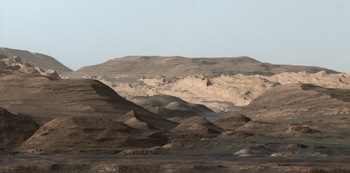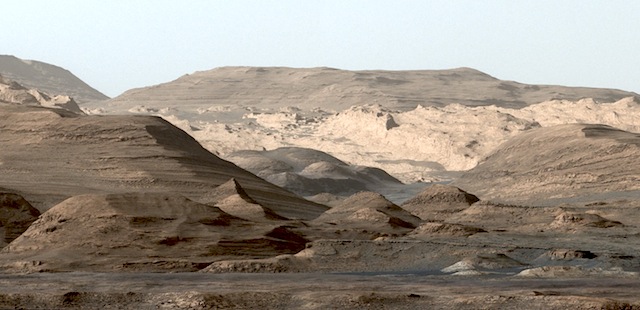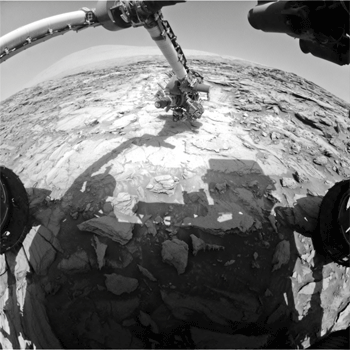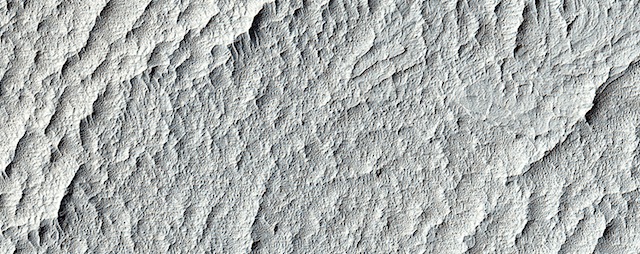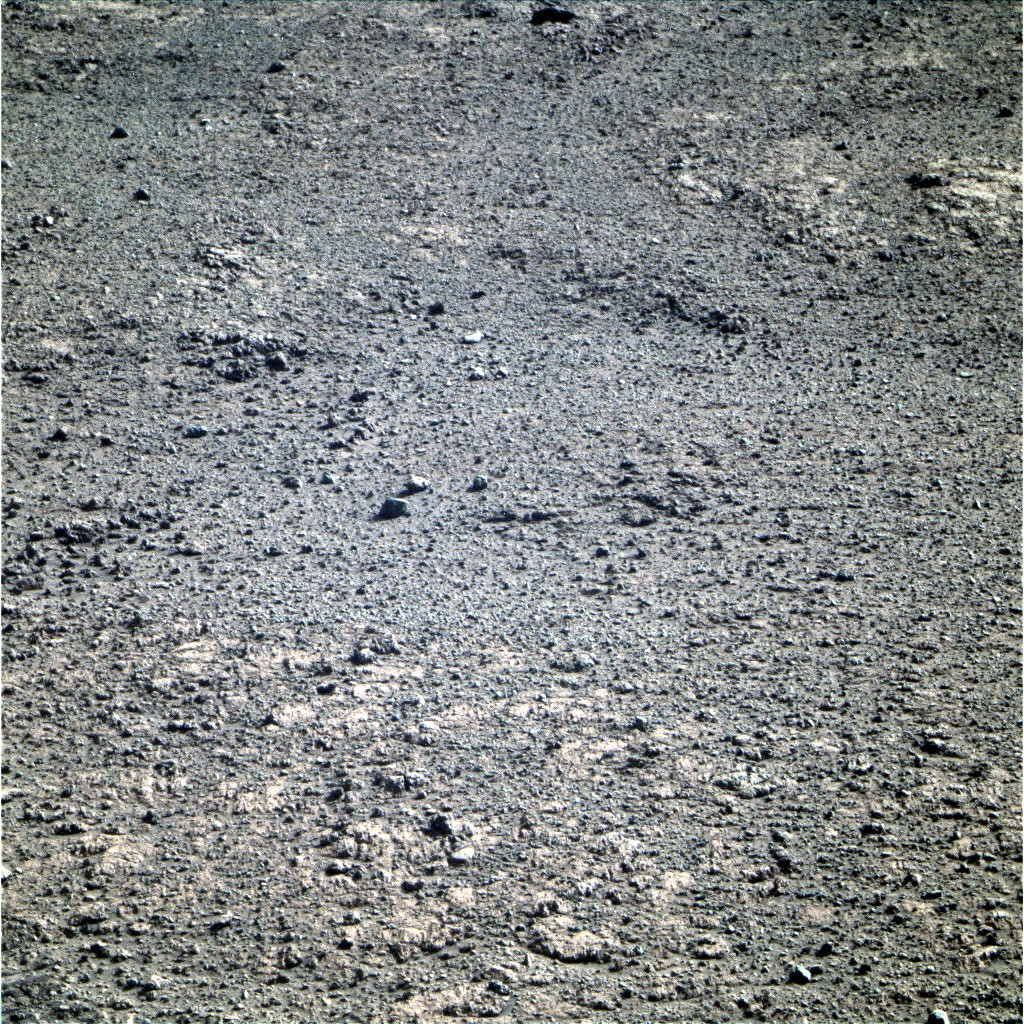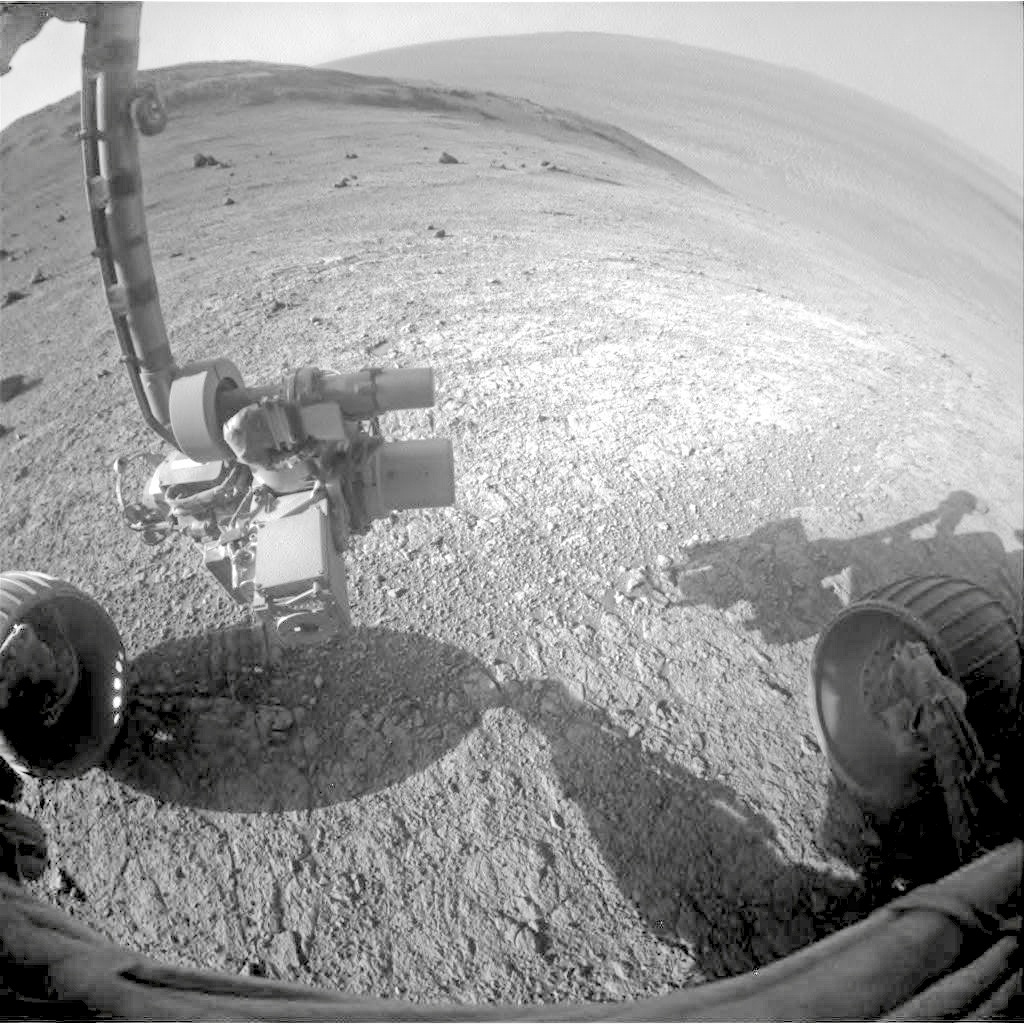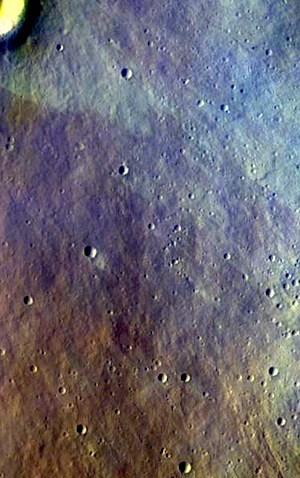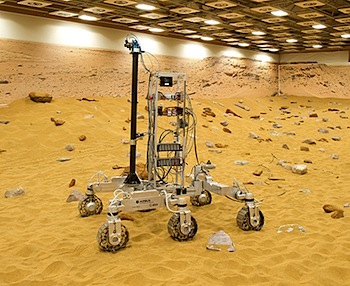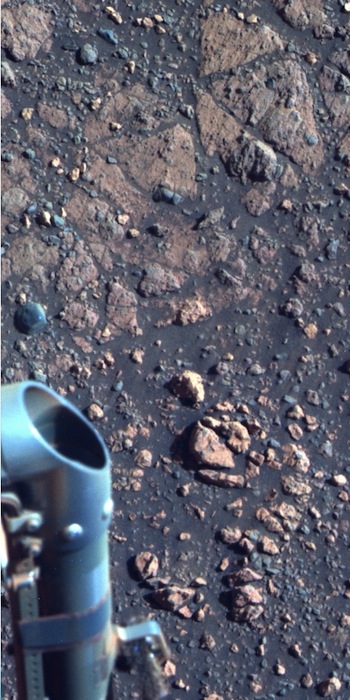 October 2, 2015: Opportunity Rocks on Ancient Water During Walkabout: The Mars Exploration Rover Opportunity continued her walkabout around Marathon Valley in September and sent home more evidence of significant water alteration and, perhaps, an ancient environment inviting enough for the emergence of life. Yet, the actual locations of the clay minerals the rover and her team are looking for still remain something of a mystery.
October 2, 2015: Opportunity Rocks on Ancient Water During Walkabout: The Mars Exploration Rover Opportunity continued her walkabout around Marathon Valley in September and sent home more evidence of significant water alteration and, perhaps, an ancient environment inviting enough for the emergence of life. Yet, the actual locations of the clay minerals the rover and her team are looking for still remain something of a mystery.
Marathon Valley, which cuts downhill from west to east for about 330 meters (about 1100 feet) through the western rim of Endeavour Crater, is turning out to be a kind of Martian geological Disneyland. Since Opportunity entered the valley in July and began imaging its walls and floor, the MER scientists are finding it almost familiar. “Marathon Valley is looking somewhat like the mountains in the Rockies that have had a lot of water alteration, places where you go prospecting for gems and minerals,” said Ray Arvidson, deputy principal investigator, of Washington University St. Louis.
Opportunity spent September prospecting for clay minerals at rock outcrops that are deep red, redder than most everything else on the Red Planet. Finding the remnants of ancient clays and characterizing the locations of different kinds of phyllosilicate clay minerals, typed as smectites, is the mission’s primary science objective in Marathon Valley. These clays form in neutral to high pH or alkaline water on Earth and provide strong evidence that water much like we drink has flowed through the valley. [More at link]









